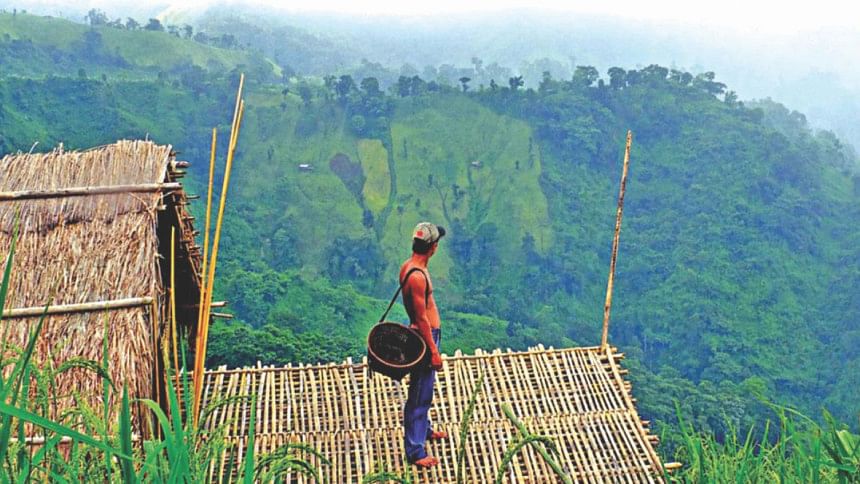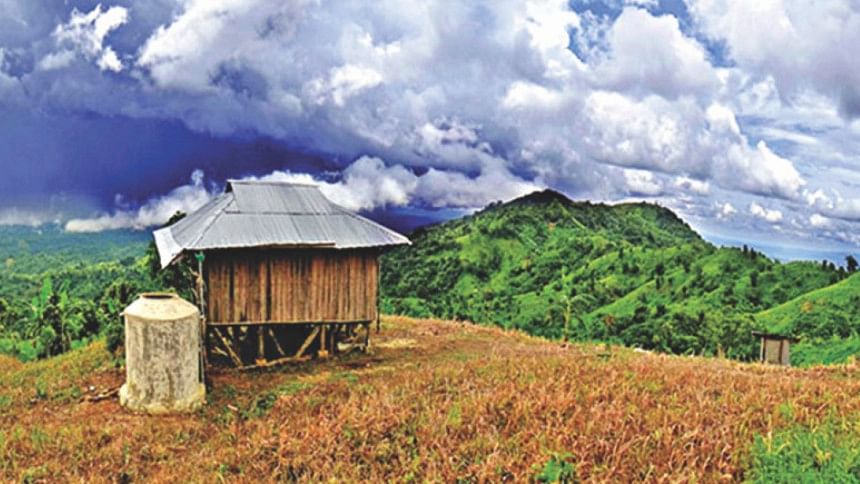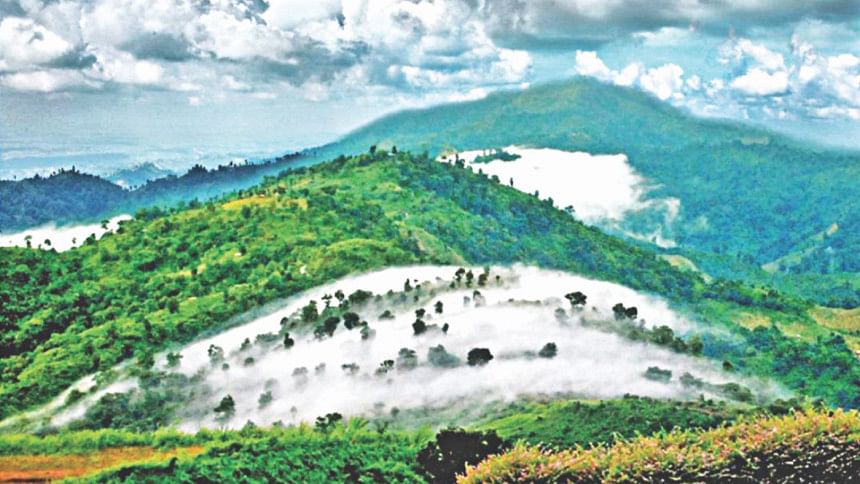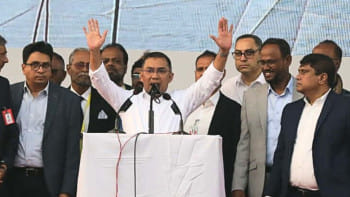Addressing poverty, inequality and climate change

The outcome document of Rio+20 conference held in Rio de Janeiro, Brazil in June 2012, 20 years after the Earth Summit was held there, is called The Future We Want. The document outlines the various conditions to be fulfilled for the world to be sustainable through generations. In fact, the pursuit of material gains, particularly by the now developed countries, since the mid-19th century, generally without considering or realising how may it adversely affect the nature and, also, spur unprecedented inequality within and across nations.
The tryst with socialism in different parts of the world and at different times notwithstanding, the thirst for economic and political power has prevailed to dictate overwhelmingly the human behaviour as well as the behaviour of nation states, particularly of the richer and powerful nations and richer and powerful segments of the populations of individual countries. This has been particularly so since the 1970s through the implementation of the Washington Consensus or neo-liberalism. The same period has also seen an unprecedented growth in global wealth creation and unparalleled scientific and technological advancements in various fields, including in the fields of information and communications and transportation. But, the control structure of this wealth and scientific and technological advancements is predominantly in the hands of the rich countries and super-rich people, who, by and large, in the first place, supported and facilitated these developments. Thus, now, the global order is characterised by large-scale inequalities as between the rich countries and the large number of poorer countries and inequalities being a deeply divisive reality within nation states.
Globally, it may be seen from a recent Oxfam study that 85 super-rich people control the same wealth as that held by the bottom 3.5 billion (roughly about the bottom half) people. Another recent Oxfam study shows that by 2016, richest one per cent of the global population would be in control of half the world's wealth; that is, the world's wealth will be divided half and half between the super-rich 1% and the rest (99%). One of the world's most unequal countries is the USA, where 1% super-rich controls 40% of the national wealth. The inequality syndrome will worsen further if the ruling paradigm keeps ruling.
The other consequence of the pursuit of wealth creation, economic gains, and movements of people and goods based on fossil-fuel-powered ever-advancing carriers is the phenomenon of global warming and the consequent climate change that is now a looming catastrophic threat to humanity.
Another threat that the world faces today is terrorism, which is now raging largely in the Middle-East, but spreading fast across the world. The reason for this also lies, to a large extent, in the greed for power and wealth and, not infrequently, in the inhuman acts undertaken in pursuit of those goals. In fact, when the reasons for the disaffection and taking to terrorism are persisting political, social and economic injustices and subjugation, this terrorism syndrome cannot be controlled through the barrel of gun. The real reasons must be identified and addressed, through sagacious political leadership, by all concerned countries, particularly the powerful countries, for a lasting solution. However, in this paper, I do not wish to discuss this issue any further. I focus particularly on inequality and climate change.

In the reminder of this paper, therefore, two international documents will be referred to prominently: Transforming our World: The 2030 Agenda for Sustainable Development (2030 Sustainable Development Agenda), adopted by the UN General Assembly in September 2015 and The Paris Agreement [on Climate Change] adopted by CoP 21 in Paris in December 2015.
Goal 10 of the 2030 sustainable Development Agenda is: 'Reduce Inequality within and among Countries' and Goal 5 is 'Achieve Gender Equality and Empower all women and Girls'. The international inequality is supposed to be addressed to an extent through the implementation of Goal 17, which is 'Strengthen the Means of Implementation and Revitalise the Global Partnership for Sustainable Development'. This has to do with development finance to be provided by the developed countries to the developing countries, technology development and transfer to and capacity enhancement in developing countries, and trade facilitation in favour of developing countries. But, it will all depend on how far partnerships will be formed; and when formed, how will they be shaped. The past experience in this regard is not very encouraging. However, the Agenda, particularly Goal 17 creates an opportunity for establishing a better world for all, through best possible efforts made by all nations.
The 2030 Sustainable Development Agenda essentially enunciates a human being-centred approach. It has declared that 'No One' will be left behind. That is, every individual, regardless of who they are and where they live, must be included in the sustainable development process. To be sure, sustainable development encompasses three dimensions: social, economic, and environmental. The broad principles and values espoused include: inclusiveness, non-discrimination, equality, human rights, human dignity, rule of law, justice, peace and security, effective institutions, and sustainability.
Indeed, it is a process of development that seeks to eradicate poverty in all its forms and dimensions and create an environment in which all the downtrodden, without exception, can achieve humanly dignified lives. A critical social problem, in this context, is the raging inequality across nations and within nations. A sustainable world cannot be built without addressing inequality adequately. In this context, the 2030 Sustainable Development Agenda calls for actions involving all citizens of a country at all levels of society in such a manner that everybody has access to necessary space for making best possible contributions to their own and national development as well as to their rightful shares of the country's socio-economic progress and enjoys equality before law and all other human rights.
While Millennium Development Goals (MDGs) were to be implemented by the developing countries with financial, technological and capacity enhancement support from the developed countries, the 2030 Sustainable Development Agenda is meant for all the countries of the world, although not all the goals and targets identified are equally important for all the countries. But, there are certain common tasks for all countries to be implemented by them on the basis of common but differentiated responsibility and respective capabilities (CBDR & RC). Thus, a developing country should mobilize as much resources as possible from within and seek additional resources from developed countries via appropriate global institutions and partnerships. The Goal 17 of the Agenda calls for building global partnerships to facilitate adequate access of developing countries, particularly the least developed countries (LDCs) to financial resources, technologies, and other necessary support to pursue their sustainable development agenda meaningfully. This is surely a good framework to build on. But, experience with respect to MDG Goal 8 on partnerships for development does not inspire much enthusiasm.
In Bangladesh, although income and consumption disparities have not increased over the past few years, both are glaring. Moreover, a number of particularly disadvantaged groups have remained as downtrodden as ever, despite significant socio-economic achievements at the national level. These groups include: people living in coastal areas, haors, baors, chars, and hills; disabled people; agricultural, particularly female agricultural workers; dalits and street cleaners; and tea garden workers. They make up a large proportion of the extremely poor 11% of the population. In addressing poverty and inequality, these groups must feature prominently, along with the various disparities across society such as women's deprivations. Another dimension of inequality viz wealth disparity, perhaps of a much worse nature, appears to be increasing in Bangladesh. Concrete data are not available on this issue. But, what is happening is not only wealth acquirement by some people through legitimate means, but often through grabbing of land, rivers, water bodies, forests, and even banks (by taking large amounts of loans and not paying back). Increased wealth inequality can be a serious impediment to inclusive, equitable, and sustainable development. This issue must, therefore, be addressed purposefully though effective legal and administrative means. Moreover, social inequality surely turns out to be much more acute in Bangladesh when the key human capability issues of education, health, and skill training are taken into account. Women and children are often very vulnerable, particularly in the lower income households.
A strong base now exists in Bangladesh to move forward as a nation in an accelerated and sustained fashion. As to the economy of the country, success stories include sustained annual GDP growth of well over 6% during the past 7-8 years; a vibrant rural economy, in terms of both agricultural (crop, fishery, poultry, livestock) and non-agricultural activities including agro-processing and agro-support; high and increasing export performance, particularly of the RMG; large and increasing remittances; expansion of ICT including mobile banking; increasing employment in rural non-agricultural and other informal sectors, and also in RMG sector, particularly for women; improved access to education and health services; elaborate safety-net programmes (social protection schemes) and women-focused programmes including ministry-wise budget for women's advancement. Areas of progress in the social sector include sharp reduction in poverty and poverty gap; increased life expectancy at birth (now 71 years); sharp reduction in infant, child, and maternal morality rates; achievement of gender equality in primary and secondary education; and noticeable progress in women's participation in job market and politics; and improvement in primary healthcare and pre- and post-natal health services as well as in controlling HIV and malaria. Obviously, while these achievements are highly encouraging, much more remains to be done to reach levels of full satisfaction.
In the 2015 year-end survey by Gallup International (Gallup Poll), Bangladesh has come out to be the country of most hopeful people in the world. That is, the people of Bangladesh are now in a position, ahead of any other people in the world, to pronounce that they have a better future. This is reflective of the progress registered by the country (exemplified in the previous paragraph) that has instilled hope and courage into people's minds.
Having achieved the major MDG targets, some ahead of time, Bangladesh is now poised to perform similarly, if not better in the implementation of the SDGs. The SDG 1 is 'End poverty in all of its forms everywhere'. One target under this goal is to eradicate extreme income poverty (based on PPP USD 1.25 a day) for all people in that position everywhere by 2030. Another target is to reduce at least by half, the proportion of men, women, and children of all ages living in poverty in all its dimensions.
Indeed, most prominent method of poverty measurement so far, including under MDG, has been with reference to income. But, it does not give a true picture as to how people live in practice. People's lives and, hence, their poverty are multidimensional. So, in order to find out how a person is actually doing, various dimensions of their living such as education, health, sanitation, housing, access to electricity and water, access to transportation, access to skill training and employment, etc. must be considered. Bangladesh has already initiated a pilot project for measuring multidimensional poverty. Bangladesh Bureau of Statistics (BBS) is implementing it. This is a step in the right direction.

In fact, UNDP has been publishing Multidimensional Poverty Indices (MPIs) for a large number of countries including Bangladesh since 2010. The UNDP findings show that in 2010, overall for 104 countries, multidimensional poverty was 21% higher compared to income poverty. Some preliminary estimates made for some parts of the Bangladesh by Palli Karma-Sahayak Foundation (PKSF) and Institute of Inclusive Finance and Development (InM) show substantially higher multidimensional poverty compared to cost of basic needs (CBN)-based poverty which is the standard measurement of poverty in Bangladesh up to now.
In Bangladesh, a very substantial reduction has been achieved in CBN-based poverty. Poverty and extreme poverty ratios are now down to about 24% and 11% respectively. However, multidimensional measurement is of particular importance as it identifies as to which group of people, which families, even which individuals suffer from which deficits as well as the extents of those deficits. As a result, it is possible to design actions, focusing on relevant dimension(s) for various groups of people to help them achieve sustained improvement in their living conditions to move out of poverty and then on to sustainable development pathway.
For a sustained reduction and eventual elimination of extreme poverty as well as for reduction in inequality, the various groups of the downtrodden listed earlier in this paper must be a major focus of poverty and inequality reduction action programmes. These various groups have differing needs in different respects. Special needs of each should be built into the action programmes. Adequate financial and institutional arrangements need to be made for effective implementation of the programmes. In this context, local governments with appropriately devolved powers as well as administrative authority and financial empowerment can play an important role. Of course, the needs of the poverty groups, other than those specified above, must also be addressed appropriately. In all these actions, multiple dimensions of poverty and of living should be the basis of policy and action programmes to be formulated and implemented.
At the macro level, the policy thrusts and budgetary allocations should be guided by the dynamics of sustainable development that is primarily focused on the human being. That is, the process has to be people-centred, with no one excluded. Therefore, in accordance with the dynamics of this approach, the ongoing unfettered market-based system needs to be appropriately restructured.
Climate change is now a looming unprecedented threat to humanity. Although caused by the now developed countries through emission of huge quantities of greenhouse gases (GHGs) from the time of industrial revolution, leading to global warming, which in turn has brought about increasing natural disasters, melting of permafrost, and sea level rise. Its adverse impacts are mostly falling on the poorer and vulnerable countries and on the poor and vulnerable people in those countries. Eventually, however, the whole world will face the consequences of climate change, signs of which are already visible given that droughts, floods, bushfires, hurricanes, etc. are occurring more frequently and more devastatingly in the developed countries as well. Bangladesh is one of those countries which are in the forefront of climate change impacts.
Goal 13 of the 2030 Sustainable Development Agenda is: 'Take urgent action to combat climate change and its impacts'. Indeed, environment is one of the three legs of sustainable development, along with economic and social development. Climate change impacts, not only hamper poverty and inequality reduction, but also accentuate them by causing damages and destruction to crops and other economic activities, houses, infrastructure, and even homesteads turning many non-poor into poor, many poor into extreme poor, and many extreme poor into destitute. A major consequence is also now taking place in the shape of displacement of increasing numbers of people, either because their homesteads and assets are washed away or lands become unproductive due to prolonged drought or salinity ingress. Hence, in any approach to poverty reduction, extreme poverty eradication, and inequality reduction must embrace appropriate actions to combat climate change impacts. The various issues surrounding climate change and its impacts and how to address the phenomenon are dealt with internationally under United Nations Framework Convention on Climate Change (UNFCCC). After long negotiations over the years, The Paris Agreement [on Climate Change] for the period to 2030 was adopted on 12 December 2015. Indeed, climate change issues cannot be addressed meaningfully unless it is integrated with economic and social development processes. In fact, in both the 2030 Sustainable Development Agenda and The Paris Agreement, an integrated approach to economic, social, and environmental issues have been advocated for sustainable development.
Although everybody will not agree with everything in the Paris Agreement, it has opened the door for delineating and implementing future course of actions to combat climate change. The Agreement will be implemented with effect from 2020 so that there is a period of four years to work out how best the Agreement can be implemented by further strengthening its strengths, minimising its weaknesses, and bringing about policy, strategy, and institutional congruence at the international, national, and local levels.
In Bangladesh, there is a strong political will to combat climate change, but it is a global issue. Bangladesh alone can do only so much. Over the past six years, Bangladesh has used Tk. 30 billion from its national budget to implement climate actions, largely adaptation projects but also mitigation projects. Indeed, Bangladesh must focus mainly on adaptation to climate change impacts inflicted on it extraneously; it has not contributed to the climate change episode at all. Surely, Bangladesh may seek to mobilise as much resources as possible from internal sources, but that will be very limited. Therefore, Bangladesh needs finances and transfer of technologies from the international arena to make a dent in terms of reducing climate change inflicted sufferings of the people as well as climate risks and vulnerability. In this context, capacity enhancement is also very important.
But, Bangladesh or any other country facing similar circumstances cannot go one adapting years and years on end unless the worsening climate change is arrested soon and reversed. In fact, in The Paris Agreement, the goal of containing global warming to well below 2oC and possibly to 1.5oC by the end of this century over pre-industrial level has been set. But as analyses show, commitments made so far for reducing global GHG emission will keep the world on a path for 2.7oC to well over 3oC warming, which will spell disaster not only for countries like Bangladesh, but, in fact, for the whole world. There is a provision that the Agreement will be reviewed every five years and it is expected the large emitters will raise their mitigation ambition in terms of further emission reductions commensurate with the agreed global warming goal. The future will tell how things play out.
Although as an LDC, Bangladesh is not required to reduce GHG emissions. Moreover, the country emits only 0.3 tonne per capita per year, compared to 10-20 tonnes in developed countries, about 7 tonnes in China, about 8 tonnes in South Africa, and about 2 tonnes in India. Bangladesh's per capita annual emission constitutes only about one-sixth of the average of the developing countries. Overall, currently, Bangladesh's contribution to annual GHG emission is only 0.35%. Yet, Bangladesh, in solidarity with the global emission action, has unconditionally committed to reduce emission in power, industry and transportation sectors by 5% by 2030 compared to business-as-usual scenario, and another 15% if necessary finance and technologies are provided by the international community.
Given the awareness and commitment of the Government of Bangladesh and other stakeholders in the country, the future course will depend how best we can turn that awareness and commitment into concrete action and ensure their effective and transparent implementation. But, obviously, adequate external resources and technologies will be needed.
Past experience in relation to delivery on commitments by the developed world is not very encouraging. For example, way back in 1970, the developed countries promised to give 0.7% of their GNIs as official development assistance (ODA) to developing countries. After 45 years, the delivery reached about 0.32%, i.e. about half of the promised figure. Can the future be different, particularly with reference to implementation of The Paris Agreement and the 2030 Sustainable Development Agenda? In both the documents, it has been recognised that all countries of the world will make their contributions on the basis of CBRD & RC. This is a cornerstone of the negotiations for partnerships to be built to implement these two global compacts. But, as of now, we may prepare to work hard and hope for the best; but uncertainties are rife and future unclear. Yet, undeterred Bangladesh must press on and not deflect from its continued efforts as much as practicable, taking on board suggestions offered in this paper, to eradicate extreme poverty, sharply reduce poverty, and bring down inequality of all manners to tolerable levels within the next decade or so, well ahead of the conclusion in 2030 of the international SDG and Climate Change compacts.
The writer is an economist, development thinker and Chairman of Palli Karma-Sahayak Foundation (PKSF)

 For all latest news, follow The Daily Star's Google News channel.
For all latest news, follow The Daily Star's Google News channel. 



Comments